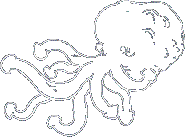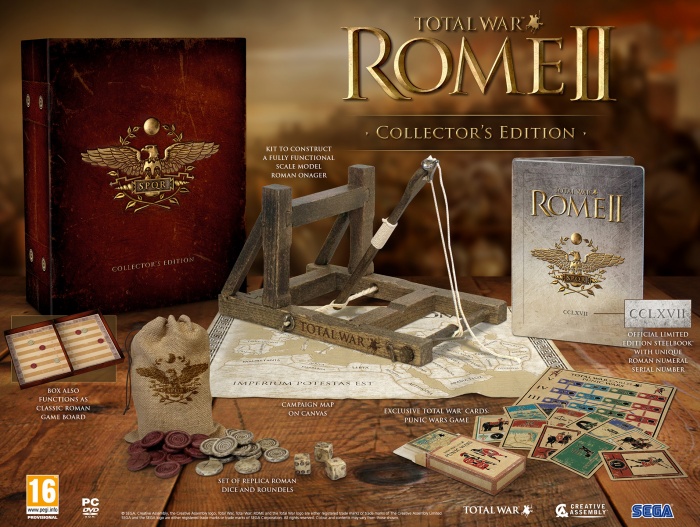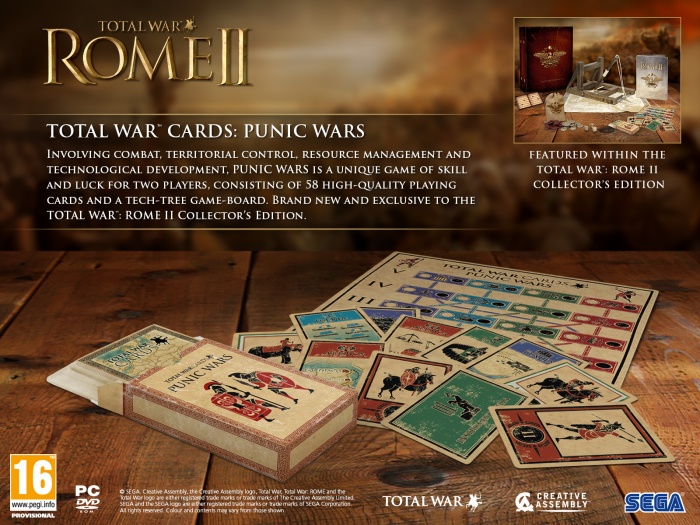Brinko
Arcane
- Joined
- May 7, 2012
- Messages
- 884
http://www.twcenter.net/forums/show...War-Center&p=12805863&viewfull=1#post12805863
Combat changes
There have been big changes to the combat system for Rome II. I will talk about these changes in the context of some new stats: weapon damage and health.
Weapon damage is split into two parts, base damage and armour piercing damage (referred to as AP damage from here on out). AP damage is always applied but base damage can be blocked by armour. Melee weapons and projectiles have this damage split. Health is the amount of hit points a soldier in a unit has, and damage dealt reduces a soldiers hit points.
This system gives us a lot more flexibility in how we balance units. Whereas before an axe may have been set as armour piercing which would reduce target armour by half, the new system allows us to give axes lots of AP damage but little base damage so that most of their damage cannot be blocked by armour. Other weapons may have the other extreme, lots of base damage but low AP damage which would make them fantastic against units with low armour but weak against more heavily armoured opponents.
All weapons do some AP damage so you can always guarantee that no matter who is fighting who some damage will always be done, though this may be very little.
Health has been introduced as the system that damage affects, most units will have a similar amount of health (more for cavalry when mounted to show the hit points of horses) and armour will be a bigger factor in a unit’s survivability as that can block damage whereas health can only absorb so much.
Melee defence is still a factor and is matched against melee attack to determine if a unit will hit and then see if it does damage.
Shields in Rome II do not just provide a bonus to melee defence, they now can provide a bonus to both melee defence and armour when a soldier is attacked from the front or left. How much of a bonus is given to melee defence or armour is dependent on the shield a unit has in the database. So a hoplite shield will give a big bonus to armour but less to melee defence due to how it was held close to the body and could not be moved around lots, but a celtic shield will give a big bonus to melee defence showing how it was used much more actively.
Charge bonus now affects both melee attack and damage to reflect the changes made to the combat system.
All these changes allow for a lot more flexibility and more depth to be portrayed in the unit balancing and combat calculations. This system has more depth to it than any previous Total War games whilst keeping the rules simple so players can grasp what each stat means. All the complexity of the previous system has been retained with more added to it
A brief note here on ranged combat. With the way we display arcs to show the range of missile units, dynamic height based range bonuses are basically impossible to do as it is entirely dependent on who the unit is targeting. Instead we have implemented a damage bonus for ranged units firing down on enemies, and a damage reduction for ranged units firing up on enemies. This allows us to have an advantage for ranged units on high ground without massively complicated code for dynamic firing arcs with very few benefits.
The new combat rules also have one v many combat coded into them. The animations may look 1v1, but under the hood every available additional attacker is factored in and will result in a person surrounded by enemies dying a lot faster.
Morale Changes
There have been less code changes to the morale system, the big one being a smoothing mechanism to soften some of the big jumps between different morale values that can be caused by balancing. This, when combined with units being in the wavering state for longer will allow players more time to react to units in trouble and to try and boost their morale.
The morale values themselves have had a lot of changes, for example the morale penalty from being under missile fire is much greater in Rome II to emphasise the harassment nature of missile units and allow those ranged units to be less focused on just killing opponents and so offer a wider array of tactical uses. The morale effects for lost casualties and flanking have also ben tweaked to help make the cause and effect of player actions more clear in the battlefield and put more emphasis on good movement and positioning.
Unit Stat Scales
As some people noticed in the Teutoberg trailer, the stats for units are a lot bigger now. This is because we are using a wider range of stats for units in Rome II. For example in Shogun 2 morale may have gone from 4 to 15 for most units (excluding heroes). In Rome II it can go from 10 to 75.
This greater range allows us much more granularity in the bonuses we give from experience and in the campaign and also a greater range to differentiate units over.
Additionally, I should point out that the Teutoberg video certainly showed barbarian units breaking earlier and Roman units surviving longer than they will do in the final game. We tweaked this for the video so that the guy demoing it could actually get through the battle to the end without dying horribly halfway through. It can be hilarious when that happens for the fifth time in a row, but maybe not so much when we are trying to record a video to show you….
Below are images of some of the Greek shield patterns.



















 Only force in greece unified enough to stop the romans and they aren't even in.
Only force in greece unified enough to stop the romans and they aren't even in.



